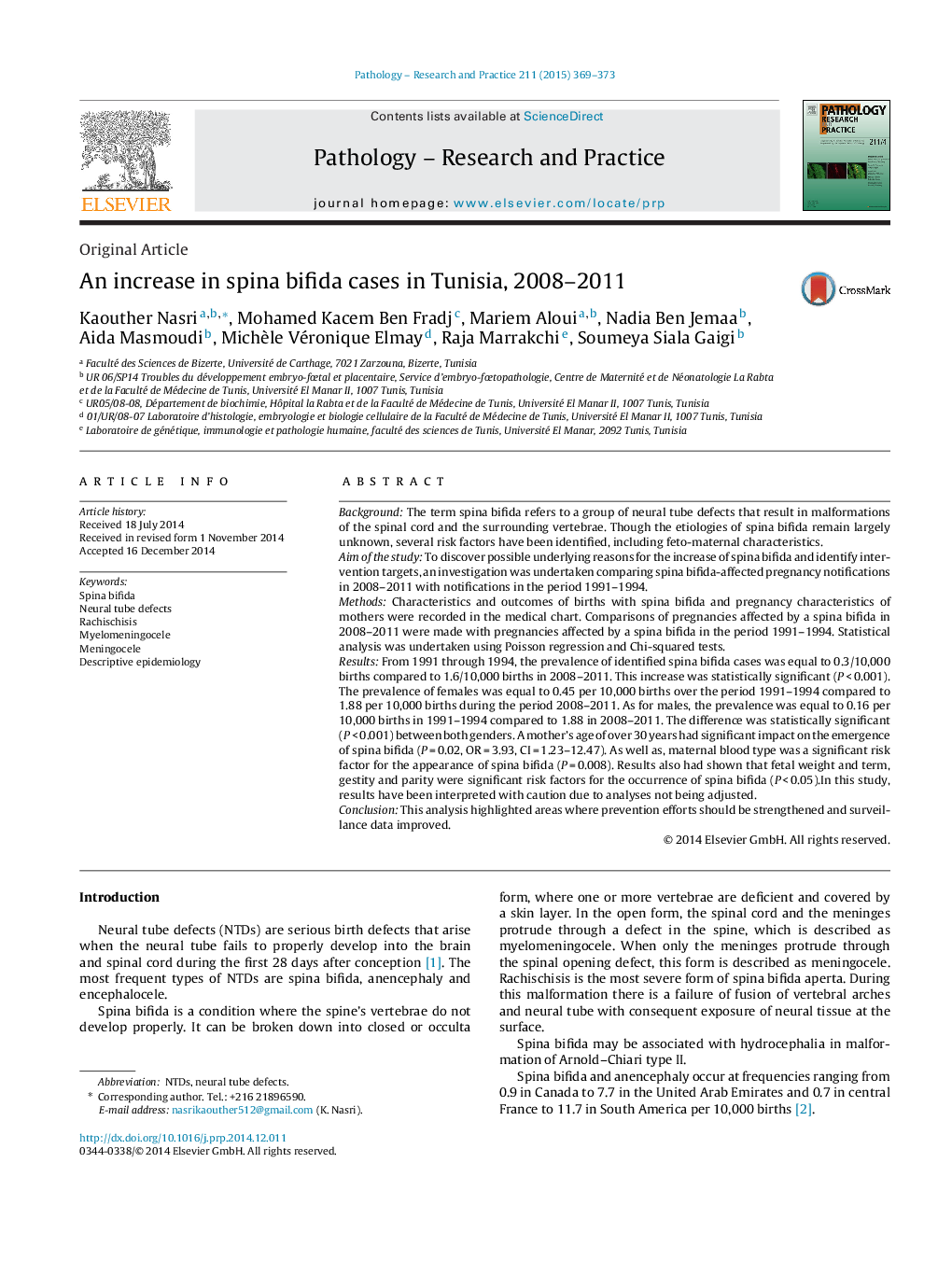| کد مقاله | کد نشریه | سال انتشار | مقاله انگلیسی | نسخه تمام متن |
|---|---|---|---|---|
| 2155050 | 1090378 | 2015 | 5 صفحه PDF | دانلود رایگان |
BackgroundThe term spina bifida refers to a group of neural tube defects that result in malformations of the spinal cord and the surrounding vertebrae. Though the etiologies of spina bifida remain largely unknown, several risk factors have been identified, including feto-maternal characteristics.Aim of the studyTo discover possible underlying reasons for the increase of spina bifida and identify intervention targets, an investigation was undertaken comparing spina bifida-affected pregnancy notifications in 2008–2011 with notifications in the period 1991–1994.MethodsCharacteristics and outcomes of births with spina bifida and pregnancy characteristics of mothers were recorded in the medical chart. Comparisons of pregnancies affected by a spina bifida in 2008–2011 were made with pregnancies affected by a spina bifida in the period 1991–1994. Statistical analysis was undertaken using Poisson regression and Chi-squared tests.ResultsFrom 1991 through 1994, the prevalence of identified spina bifida cases was equal to 0.3/10,000 births compared to 1.6/10,000 births in 2008–2011. This increase was statistically significant (P < 0.001). The prevalence of females was equal to 0.45 per 10,000 births over the period 1991–1994 compared to 1.88 per 10,000 births during the period 2008–2011. As for males, the prevalence was equal to 0.16 per 10,000 births in 1991–1994 compared to 1.88 in 2008–2011. The difference was statistically significant (P < 0.001) between both genders. A mother's age of over 30 years had significant impact on the emergence of spina bifida (P = 0.02, OR = 3.93, CI = 1.23–12.47). As well as, maternal blood type was a significant risk factor for the appearance of spina bifida (P = 0.008). Results also had shown that fetal weight and term, gestity and parity were significant risk factors for the occurrence of spina bifida (P < 0.05).In this study, results have been interpreted with caution due to analyses not being adjusted.ConclusionThis analysis highlighted areas where prevention efforts should be strengthened and surveillance data improved.
Journal: Pathology - Research and Practice - Volume 211, Issue 5, May 2015, Pages 369–373
